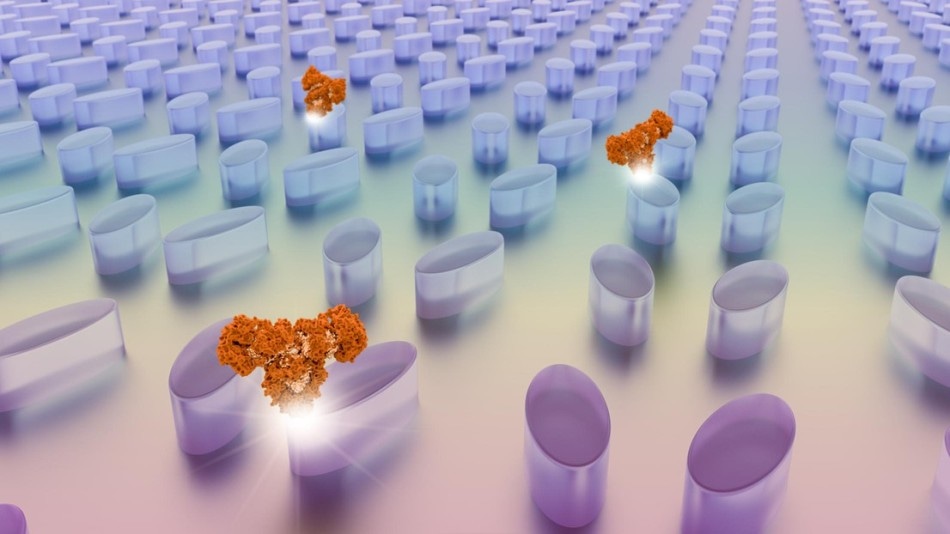Apr 3 2019
Every individual may have a simple device in the near future. This device would be so small that it can be kept on a nightstand, or can even be accommodated in people’s pocket.
 With nothing more than a photonic chip and an ordinary camera, EPFL researchers have managed to count biomolecules one by one in a small sample and determine their position. Their tiny device—a marriage of optics and smart image analysis—is even able to detect a graphene sheet only a single atom thick. This type of sensor could one day play a key role in personalized medicine. (Image credit: EPFL)
With nothing more than a photonic chip and an ordinary camera, EPFL researchers have managed to count biomolecules one by one in a small sample and determine their position. Their tiny device—a marriage of optics and smart image analysis—is even able to detect a graphene sheet only a single atom thick. This type of sensor could one day play a key role in personalized medicine. (Image credit: EPFL)
Such a device will be able to detect even trace levels of unwanted biomarkers in individuals’ saliva or blood, act as an early-warning system for various diseases, and keep individuals apprised of their level of health. This is one of the promises of personalized medicine.
Now, thanks to a robust tool created by scientists at EPFL’s BioNanoPhotonic Systems (BIOS) Laboratory, this technological breakthrough could be one step closer. The tool includes a miniaturized, ultra-thin optical chip that can be integrated with a normal CMOS camera and driven by image analysis to count biomolecules in sequence in a small sample and establish their location. The results of the study have been reported in Nature Photonics.
A very powerful sensor
This groundbreaking technology is predicated on metasurfaces, which are emerging stars in the domain of photonics. Metasurfaces are essentially sheets of synthetic materials surrounded by an infinite number of nano-sized elements organized in a unique fashion. These elements—at a specific frequency—are capable of squeezing light into very small volumes, thus producing optical “hotspots” that are highly sensitive.
When light illuminates on the metasurface and strikes a molecule at one among the various hotspots, the molecule is instantly identified. As a matter of fact, by altering the wavelength of the light that strikes it, the biomolecule gives itself away.
Scanning molecules and taking their picture
When the researchers applied lights of different colors on the metasurface and took a picture each time with a standard CMOS camera, they were able to count the number of biomolecules present in a sample and learn what precisely is occurring on the sensor chip.
We then use smart data science tools to analyze the millions of CMOS pixels obtained through this process and identify trends. We’ve demonstrated that we can detect and image not just individual biomolecules at the hotspots, but even a single graphene sheet that’s only one atom thick.
Filiz Yesilkoy, Study First Author and Researcher, EPFL.
The investigators improved their work by creating a second version of their system, in which the metasurfaces are programmed to resonate at varied wavelengths in varied regions.
This technique is simpler, yet it is also less precise in locating the molecules.
Eduardo R. Arvelo, Study Co-Author and Postdoctoral Researcher, EPFL.
A game changer in disease detection?
Light possesses many attributes—such as intensity, phase and polarization—and is capable of traversing space. This means that optical sensors could play a major role in addressing future challenges—particularly in personalized medicine.
Hatice Altug, Study Lead and Associate Professor, School of Engineering, EPFL.
Altug, who also manages the BIOS lab, sees great potential in this domain of optics.